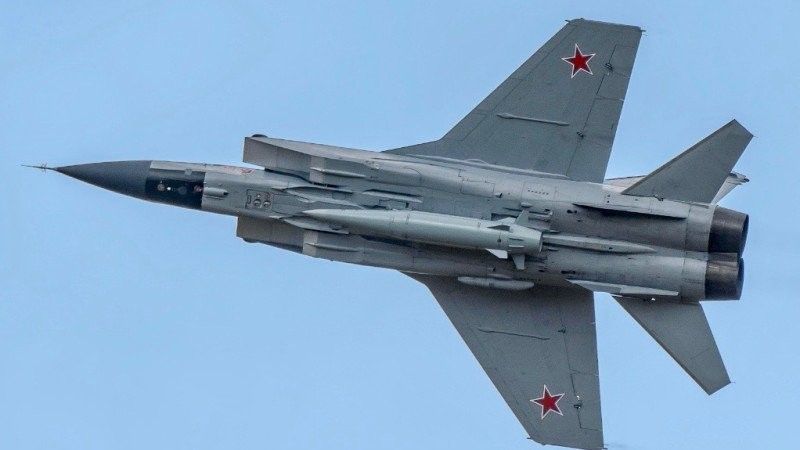Armed Forces
Russian Kh-47 Kinzhal Shot Down by Patriot

Photo. MIL.RU
The Kh-47 Kinzhal missile, marketed by the Russians as a weapon that „cannot be stopped by the air defence systems of western origin”, was shot down on 4th May, over Kyiv, by the Ukrainian air defences. The missile remains made it possible to identify the threat. While at first the Ukrainian Armed Forces did
The downing of the Russian hypersonic missile led to a loud explosion, heard by the citizens of Kyiv on 4th May, at 2.40 AM, as announced by Defence-Express. The military administration of Kyiv made an official announcement on the attack, noting that the air strike included the Shahid drones and ballistic missiles. The Defence-Express outlet also used its sources to obtain photos of the front part of the missile that has been shot down, and that fell on one of the stadiums in Kyiv.
It is confirmed! #Patriot got #Kinzhal! After hours of silence/denials (OPSEC), Ukrainian Air Force @KpsZSU confirmed they got it! And if you remember all that critique of Patriot here (in PL) and there... not aged well, cc @PaperMissiles @DefAeroNews @gepardtatze @JEyal_RUSI 1/ pic.twitter.com/RlELvbZUV9
— Jakub Palowski (@JakubPalowski) May 6, 2023
At first, Ukrainian Armed Forces (or precisely the Ukrainian Air Force which are responsible for defence against such threats) denied the fact that Kinzhal was shot down. Later however it was confirmed, and some Western officials quoted by the New York Times also confirm Kinzhal was shot down. The initial reluctance of Ukrainian side to confirm the shoot-down, first of this kind, was likely caused by operational security concerns.
The photos depict the well-known shape of Kinzhal's nose, with fragmentation damage marks. That missile was shot down by a Patriot system, likely with the PAC-3 missile designed to counter ballistic missiles. Notably, the Russians are advertising the Kh-47 as a hypersonic weapon. The Kinzhal missile, however, remains unable to maintain that speed throughout its whole flight, as it travels at that velocity just during the initial phase. The above means that when used at longer ranges, the speed drops and is comparable to other ballistic missiles. That stems from the specific nature of the missile's propulsion, as well as the hypersonic speed structural load.

Photo. Defence-Express
The photos of the wreckage provide us with interesting data on materials used in Kinzhal - with low levels of thermal resistance. Hence the use of a thick layer at the front that heats up significantly due to friction at hypersonic speeds. The Russian sources claim that Kinzhal can travel at speeds of up to Mach 10 (12,000 kph). Certainly, however, that speed cannot be kept high for longer periods.
The existence of the Kinzhal missile was unveiled in 2018, during a speech made by Vladimir Putin. A special-purpose variant of the MiG-31, named MiG-31K, is used as a launch platform for the Kinzhal missile. Currently, just a few examples exist, gathered within a single squadron of the Russian Aerospace Forces. Modernized Tu-22M3M Backfire bombers and the Su-57 Felon fighters are expected to use the Kinzhal missiles in the future.
The Kh-47M2 is derived from the Iskander SRBM and was created, probably, simply as a result of tailoring the Iskander for being air-launched. The missile body is 7 meters long and it weighs around 4 tonnes. It features a 500 kilogram conventional or nuclear (500 kilotonnes) warhead. The missile utilizes a combined INS/GLONASS navigation system but, in the terminal phase of the engagement, it can use an optronic sensor. Kinzhal has been designed to act against large warships, among other purposes - including aircraft carriers. The estimated range exceeds 1,500 kilometers.
